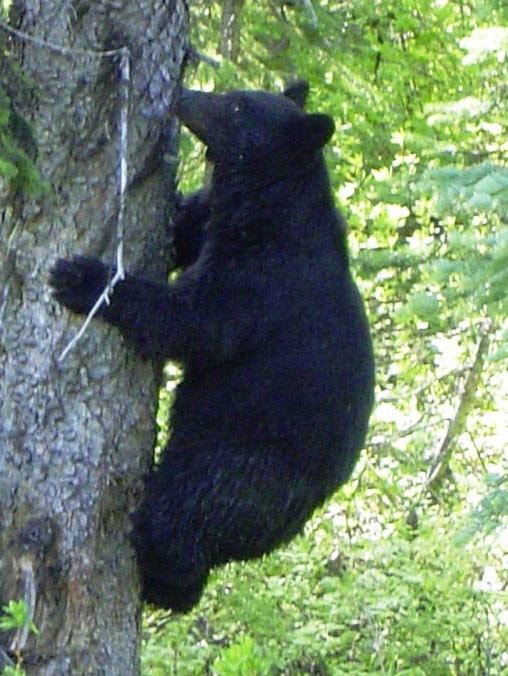Bears don’t fully hibernate like chipmunks.
Instead, they spend winter in a deep sleep; their heartbeat slows but their body temperature drops only slightly.
Bear dormancy is a little understood biochemical marvel. Biologists know that bears recycle their bodily wastes (urea) into proteins to prevent toxic buildup while maintaining muscle mass until spring.
Also, how sows can lactate, since they aren’t drinking any water, is still a mystery. It’s assumed their fat is metabolized to produce rich milk for their young.
Before hibernation, adult black bears weigh 100 to 300 kgs. They lose about 30 to 40 per cent of their body weight while hibernating and emerge from their dens voraciously hungry.
Thankfully, their favourite spring foods consist of nutritious bulbs and shoots, grass, flowers, insects and larvae. They may even dig up a few mouse or pocket gopher families.
They can gain up to 14 kgs/week from spring to fall by consuming up to 20,000 calories a day binging. About 85 per cent of their diet is vegetation.
READ MORE: SilverStar eastiest place to spot black bears
Adult black bears stand up to one metre on all fours and are 1.5 metre long, up to 2 metres high if standing on their hind legs to sniff the air for scents.
Bears have long, narrow tongues that can wrap around shrub branches to strip off leaves and berries by the mouth-full.
Their flexible lips can be manipulated with great dexterity.
Bears are fast short distance runners when necessary — up to 60 km/hr on the flat and even faster running downhill.
Black bears are also good climbers and swimmers.
B.C. is home to more than one-quarter of Canada’s black bears, numbering 120,000 to 150,000.
They generally live 15 to 20 years in the wild, but they can live up to 30 years or more.
Do not feed bears! A fed bear is a dead bear.
Besides legal hunting, about 950 or more black bears are destroyed in B.C. each year as a result of conflicts between people and bears mostly due to attraction to garbage.
Other common problem food sources include pet food, bird seed, ripe fruit, unattended compost piles and bee hives.
The B.C. Conservation Service spends more than $1 million each year responding to bear complaints, destroying and relocating bears.
About 150 bears are relocated annually, but they often return to trouble.
What to do if encountering a black bear: Black Bear encounter what-to-does:
• Usually meeting a bear is a surprise to both parties. They’ll usually take off, if not you should back off slowly, while talking to the bear. Do not run as this may startle the bear into a chase mode.
• Prevent surprises by learning about bears, watching out for fresh tracks and scats, staying out of probable bear areas such as ripe berry patches and by making noise when traveling through bear country (talking, singing or occasionally shouting while banging sticks or hiking poles is best). Be alert and always travel in groups.
• Female black bears will aggressively defend their young. They usually chase them up a tree and stand guard below. Never climb a tree to avoid a bear encounter. Bears are good climbers.
Black bear attacks are very rare. If one is aggressively approaching, drop pack-sacks and move away without threatening or further arousing the bear — it’s usually a bluff.
If attacked, use bear spray. The situation will dictate whether to retreat or fight off the bear.
For more information about bears, BC Parks, the BC Bear Smart program and WildSafeBC have great online websites on bears and bear safety.
Roseanne Van Ee enthusiastically shares her knowledge of the outdoors to help readers experience and enjoy nature
